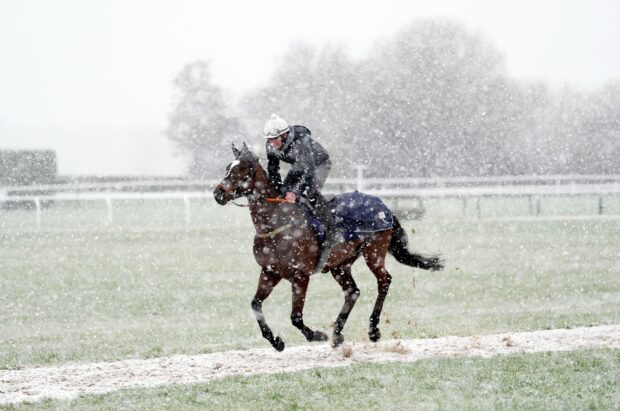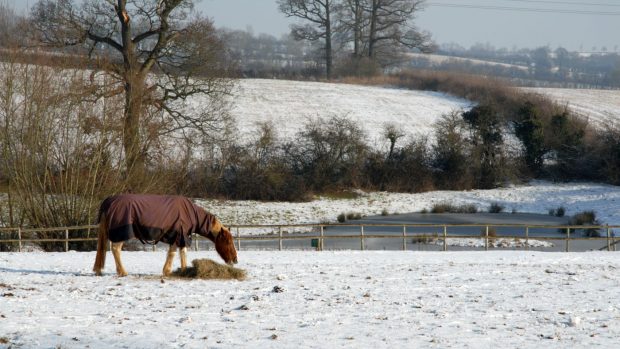Some of us in the UK have recently found ourselves having to negotiate snowy weather, so H&H investigates whether it’s safe to ride on snow
It may look deep and crisp and even — but is riding on snow snow really safe? It’s a dilemma facing many owners whose horses become stable-bound when temperatures plummet.
At Jeremy Scott’s yard, high up on the outskirts of Exmoor National Park, the pointers and racehorses keep exercising through the white stuff — in certain conditions.
“It depends on the type of snow,” says trainer Camilla Scott. “Some snow balls up in the horses’ feet, but the soft, powdery stuff we ride on falls back out again, so we don’t have to put anything in their hooves. We ride across fields where we know the ground is good underneath, and we only walk and trot.
“A few horses don’t like the way the snow flicks up and hits their bellies, but most love being out in it,” adds Camilla, who advises exercising extra caution in thawing or icy conditions or where snow has drifted.
Riding on snow: Pads, studs and grease
Pads to prevent snow balling are more common in colder countries. Options include rubber bubble pads that “pop” the snow from the hoof, and tube-type rim pads that dislodge snowballs while allowing the frog and sole to breathe.
Riding on hard frost or ice is generally to be avoided, although horses in some snowbound parts of the world continue working with special studs or shoes that provide better traction.
Farrier Haydn Price points out that snow rarely lasts long enough in the UK to warrant the use of specialist products or methods.
“The old-fashioned method of greasing works well enough,” he says. “Coat the soles and the inside of the shoes with really thick, high-density industrial grease. It won’t hurt the hooves, in the short term, and it will stop snow balling up inside them.”
The barefoot question
Nic Barker, who runs a rehabilitation yard for horses with long-term lameness and hoof problems, reckons that horses are better in snow than a 4×4 vehicle.
“I love it when it snows,” says Nic. “We often get snowed in as we live up on Exmoor, but with a yardful of barefoot horses, that doesn’t mean time off. In fact, it means you have no excuse for avoiding exercising them, as barefoot horses revel in snowy conditions.
“Whereas snow can cause problems for shod horses — balling and freezing onto the metal in the shoe and creating dangerous snow ‘stilts’ — with a barefoot horse the snow simply falls out. They can carry on as normal, completely sure-footed.”
- To stay up to date with all the breaking news throughout London International and more, subscribe to the Horse & Hound website
You may also be interested in:

How to stop water buckets freezing: 12 top tips to help prevent this issue

H&H’s ultimate winter survival guide: things you need at your yard
Follow our tips and advice to get through the long winter months

Subscribe to Horse & Hound magazine today – and enjoy unlimited website access all year round

When is it too cold to walk your dog?




